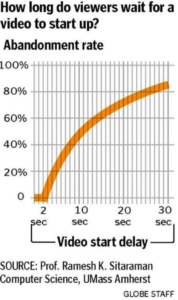Building a marketing plan and fully activating a marketing plan are two completely different things, but it can make the difference between moderate and outstanding brand performance and ROI. The difference is what we will call “Marketing Plan Activation.”
Marketing Plan Activation requires equal parts effort and imagination. Usually, a small incremental investment will give your brand an incredible boost. Fully activating your marketing plan requires a coordinated effort that may test your resolve, as well as the relationships you have cultivated within your organization. It will also provide huge dividends. Do yourself a favor, plus out your plan with Activation in mind.
Manufactured Fame
In the practice of True Integrated Marketing Communications (IMC) the strategic plan will call for a wide variety of marketing activity across multiple marketing platforms. The centerpiece of the plan tends to be high-ticket, high-profile investments. This takes the form of paid advertising and sponsorship of media and events, promotions experts, endorsers, strategic partnerships with companies and brands, and many internal programs such as major customer rebate or incentive plans.
These programs are vetted by you, your management and staff and written into the plan/budget because they deliver visibility, brand association, and opportunities for the introduction to new ideas to new audiences. This is manufactured fame, paid for with the cash your company allows you to set aside for marketing. This effectively builds awareness and is convenient because you don’t need to originate the program, you simply write a check and place your logo on it, then step back and reap the rewards. And because many of these properties are effective and efficient, your small marketing staff can create significant impact; you have performed your function as a brand steward. This is the usual case and is considered right and proper.
But, this is also a trap. Most marketing plans are chock full of expensive sponsorships, but a great deal of their value remains unrealized by the brand.
Why? Why would highly competent marketing professionals walk away from value, theoretically squandering the resources of their company?
The answer is that marketers fall into the trap of seeing themselves as program facilitators rather than creative program originators and designers. The traditional advertising agency tends to be complicit in this crime. They have facilitated the transaction and received their compensation; therefore, they consider their job completed. Unfortunately, this is the norm rather than the exception. It is accepted by management and staff, and it is often how we are trained.
To Activate: Develop an Original Marketing Program
To break the cycle and realize tremendous untapped marketing power, you must fully activate your marketing plan. A change of mindset is necessary. Do not simply purchase manufactured fame. Utilize the luxury of the media/sponsorship budget as the foundation, and then cultivate your original program through the myriad creative opportunities these investments afford you. When fully activating your marketing plan, the purchase of media/sponsorship is where the work really begins, not where it ends!
This is where a strong a case for the employment of an integrated agency can be made. An agency that practices integrated marketing can see the full playing field and value in event, PR, promotion, CRM, and social marketing, and will seek out and connect these opportunities to magnify the brand’s potency.
When looking to activate your brand, consider that the level of activity surrounding your media properties will increase and in many cases you may be faced with manpower issues. Who will administer these programs? Explore involving your sales and service personnel. They often will derive great benefit from involvement, and you will be contributing positively to the cultural growth of your organization.
Consider also, in evaluating purchases, that you may not need as many high-ticket/high-profile properties and that more resources should be poured into the activation (as much as 3:1 ratio) than in the original purchase. This often increases ROI by driving highly efficient and measurable activity. Fewer, better utilized programs may be called for, and the budget may need to be realigned. That likely translates into tapping into the media budget, and reallocating those funds to PR, social media, and event marketing expenditures.
Questions to Ask When Evaluating Media / Sponsorships
Each company should go into the activation process with a clear understanding of what their brand’s challenges are. Tailoring incremental programs to the areas of greatest need will always produce the best results. But there are some starter inquiries that will work for virtually everyone regardless of the media, the category or the product:
- Look at the production schedules with an eye toward product placement and alignment with your promotional schedule.
- Probe into social media activities. How can the brands be cross-promoted?
- Develop efficient registration and promotion onsite or through alternative media that provides opt-in identities for CRM/email.
- Consider what added value signage or advertising might be negotiated.
- Look into non-competitive corporate sponsors who would be interested in a co-promotion – Media often can make introductions.
- Look at possible video opportunities. Can you get incremental footage or reuse footage such as testimonials or endorsement on your website?
- Notify all relevant media of your involvement and engage each, sharing original insight and perspectives that are consistent with what they want to cover.
- Ask about free surveys or research, or lists that you might acquire.
- Consider how you can tie exclusive new product news announcements or promotions to this.
Marketing Plan Activation can take many forms. The key is to fully leverage your investments and to create an integrated system that continually drives the audience to higher levels of engagement with your brand.






